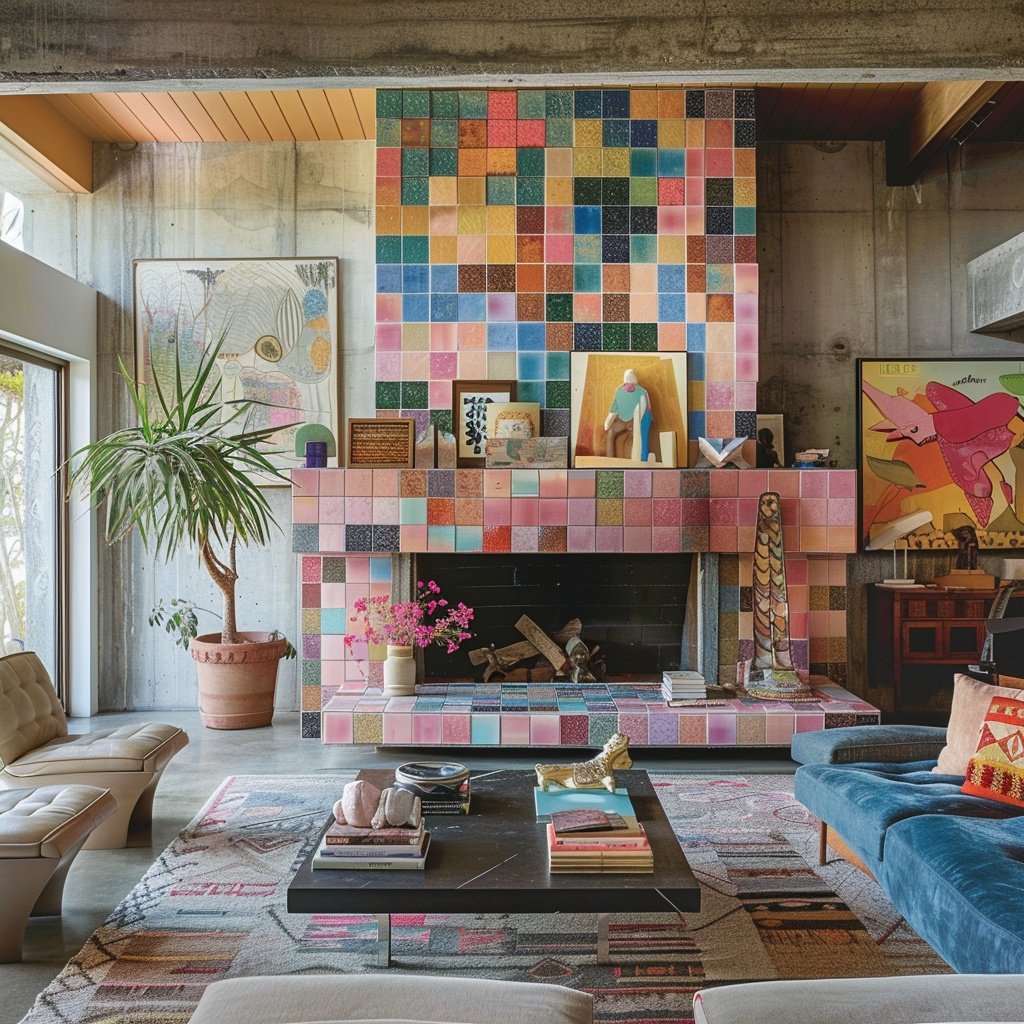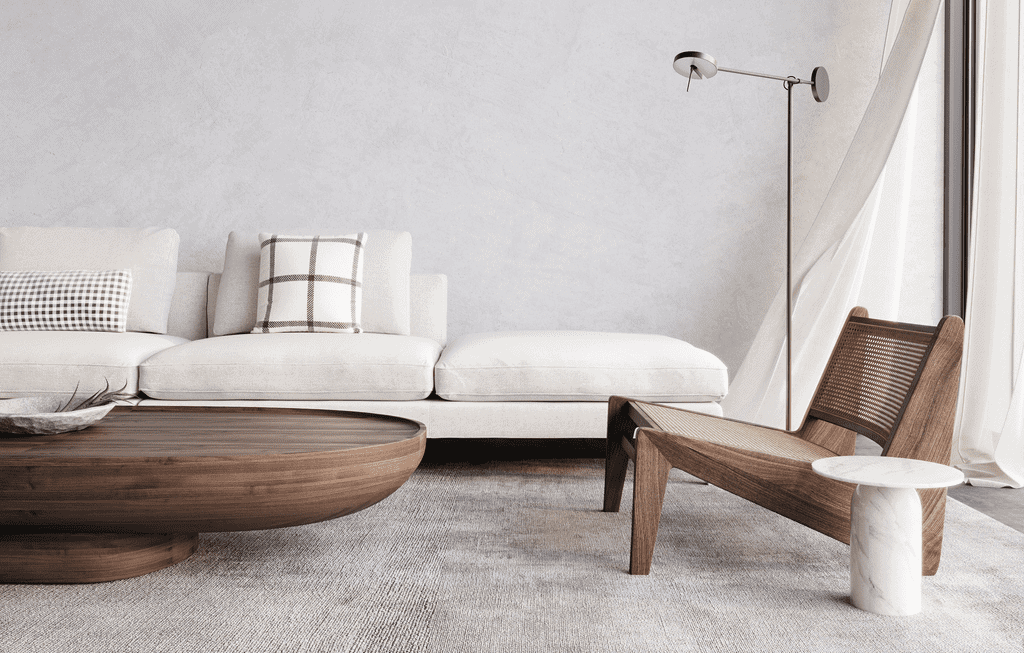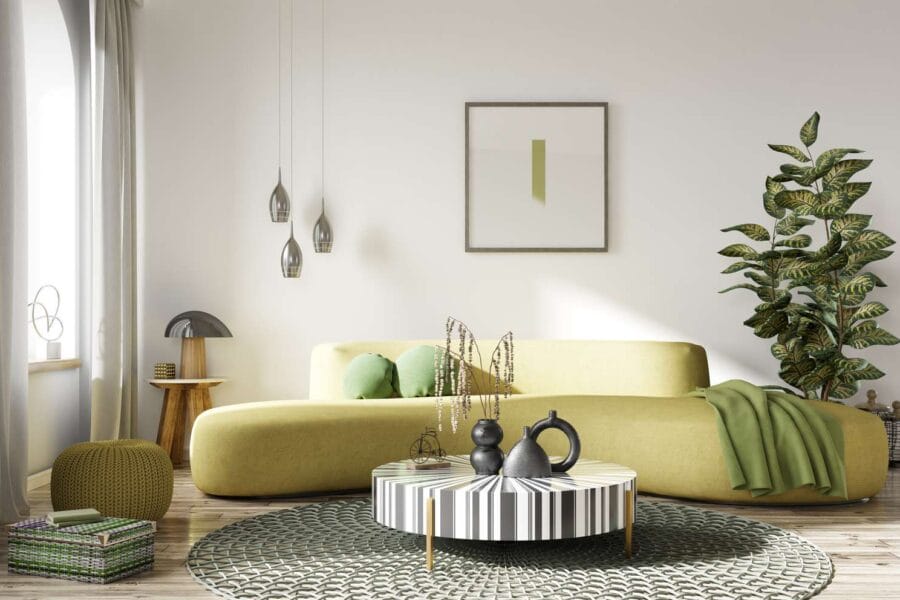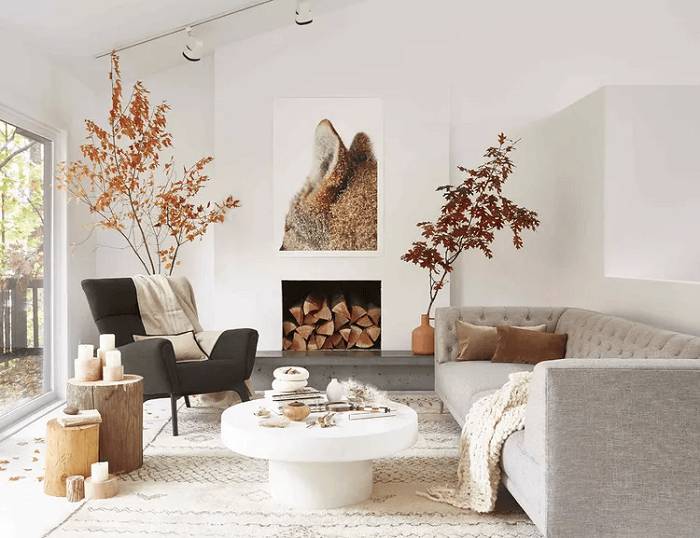Creating an inviting and visually appealing coffee table display can often feel challenging. Whether you’re looking to enhance your living space or foster connections with guests, understanding how to curate a cohesive and engaging arrangement is key. This article will provide practical strategies for selecting themes, balancing colors and textures, and incorporating meaningful personal objects, ultimately guiding you toward a coffee table that sparks conversation and reflects your unique style.
Table of Contents
Creating a Cohesive Theme for Your Coffee Table Display
Designing a coffee table display isn’t just about placing decorative objects haphazardly; it’s an art that involves creativity and intentionality. A cohesive theme binds together your selected items, transforming an ordinary coffee table into an elegant focal point of your living space. In this article, we’ll explore how to create a harmonious theme that reflects your personal style while enhancing the overall aesthetic of your room.
Choosing a Central Concept
The first step in curating a cohesive coffee table display is to choose a central concept or theme. This foundation will guide your selections and ensure that everything feels connected. Consider these popular themes:
- Minimalist: Focus on fewer items, emphasizing clean lines and neutral colors.
- Rustic: Incorporate natural materials like wood and stone, paired with vintage or handmade items.
- Artistic: Showcase colorful artwork, eclectic decor, or unique collectibles that stimulate conversation.
- Modern Chic: Utilize sleek, innovative designs combined with pops of color or metallic finishes.
Selecting a theme is a crucial starting point for a coffee table display. Think about the mood you want to evoke in your space. For instance, if you desire a tranquil atmosphere, a minimalist theme with subtle decor might be the best fit.
Balancing Proportions and Arrangements
Once you’ve selected a theme, the next step is ensuring that your arrangement is visually balanced. This involves playing with proportions and placements to create an engaging visual narrative:
- Layering Heights: Vary the heights of objects. Use tall candles or vases alongside lower books or trays for an appealing contrast.
- Creating Groupings: Cluster items in small groups rather than scattering them. This can make arrangements feel more intentional and less chaotic.
- Utilizing Negative Space: Don’t overcrowd your display. Allow for empty space to breathe, making the items you do have more prominent.
A well-thought-out arrangement not only enhances visual appeal but also invites exploration. Guests are more likely to engage with a display that is thoughtfully arranged, fostering a sense of connection.
Incorporating Color and Texture
While this article focuses primarily on cohesiveness, color and texture are vital aspects of any display. Choosing a color palette that complements your theme can tie everything together:
- Pastel Hues: Ideal for a soft, calming theme, perfect for cozy decor.
- Bold Colors: Create a striking contrast against neutral backdrops for a modern look.
- Earth Tones: Introduce warmth; ideal for rustic or nature-inspired themes.
Combining different textures, such as smooth ceramics with rough wood or glossy glass, can add depth and interest. Exciting textures not only enhance the visual appeal but also engage the tactile senses when interacting with the display.
Personal Touches and Meaningful Objects
A cohesive theme is also about showcasing personal items that tell a story or resonate with your experiences. Integrating photographs, souvenirs from travels, or handmade crafts adds a layer of meaning to your display:
- Photos: Personal photographs in stylish frames can serve as a heartfelt reminder of cherished memories.
- Travel Souvenirs: Unique artifacts from your journeys can evoke stories and conversations, connecting you with guests.
- Family Heirlooms: Incorporate items passed down through generations to add character and nostalgia to your decor.
Such items create a narrative, inviting guests to engage not just with the display, but also with the stories behind the objects. They bridge the gap between personal history and current design trends.
In summary, creating a cohesive theme for your coffee table display is an enriching practice that reflects your style and personality. By carefully selecting a central theme, balancing your arrangements, and incorporating personal touches, you can curate a space that is visually appealing and deeply meaningful.
For more insights on interior design and decor, consider exploring House Beautiful for tips, trends, and inspiration.
Incorporating Natural Elements for Enhanced Aesthetic Appeal
In today’s interior design landscape, the integration of natural elements into home decor has become more than just a trend; it has evolved into a lifestyle choice that enhances visual appeal while promoting a sense of well-being. Achieving this harmonious marriage between design and nature in your living spaces can significantly elevate the aesthetic of your coffee table display and set the stage for a tranquil atmosphere.
The Power of Natural Materials
Choosing natural materials is fundamental when you aim to create an inviting coffee table display. Here are some options to consider:
- Wood: Utilizing reclaimed or sustainably sourced wood showcases unique textures and grains that add warmth to your space.
- Stone: Incorporating items made of marble, granite, or slate introduces a cool contrast and invites the beauty of raw nature into your decor.
- Glass: Clear glass elements, whether in vases, tabletops, or decorative objects, can reflect light and enhance the overall ambiance without competing for attention.
This thoughtful selection of materials not only highlights the aesthetic value but also promotes sustainable living practices, aligning your design choices with environmental consciousness.
Bringing Nature Indoors with Plants
Integrating plants is one of the most straightforward and impactful methods of enriching your coffee table display. Here are some ideas for enhancing your aesthetic appeal:
- Succulents: These low-maintenance plants are perfect for small spaces. Their sculptural shapes add a modern touch, while their varied colors can introduce a subtle palette to the décor.
- Terrariums: A glass terrarium can serve as a miniature ecosystem, fostering an enchanting conversation piece and a beautiful focal point on your table.
- Cut Flowers: Seasonal blooms can bring freshness and vibrancy, allowing for a dynamic display that changes with the seasons.
Plants not only beautify your space but also improve air quality, providing additional health benefits that enhance your living environment.
Natural Textures for a Layered Look
When it comes to enhancing your coffee table display through textures, consider layering different natural elements. Here’s how:
- Textiles: Incorporate items like linen or cotton table runners, which provide a tactile contrast against hard surfaces.
- Natural Woven Baskets: Use these for storage or as display containers. Their textures can add depth and interest to your arrangement.
- Organic Shapes: Incorporate decor pieces with soft, natural forms—think driftwood sculptures or ceramic items that echo natural silhouettes.
By focusing on varied textures, you can create a rich visual experience that also invites touch and exploration, making your table display not just seen, but felt.
Natural Colors to Create Cohesion
To ensure your coffee table arrangement feels cohesive and calming, aim for a color palette inspired by nature. Here are some color inspirations:
- Earthy Hues: Shades of greens, browns, and beiges create a serene backdrop that evokes natural landscapes.
- Soft Pastels: Elegant and subtle, these colors can mimic floral or sandy motifs, infusing a sense of calmness into your space.
- Bold Accents: Merges of deeper shades, such as navy or terracotta, can evoke the vividness of the natural world and serve as stunning focal points.
By aligning your color palette with the inspirations drawn from nature, you create an aesthetically harmonious display that not only looks inviting but also brings an element of peace to your space.
Incorporating these elements into your coffee table not only provides enhanced aesthetic appeal but fosters an environment that encourages connection with nature. As we transition to the next topic, let’s explore how to utilize color and texture for dynamic visual interest in your displays, an exciting continuation of our journey toward creating the perfect coffee table aesthetic.
Utilizing Color and Texture for Dynamic Visual Interest
Creating an engaging coffee table display goes beyond simply placing a few items haphazardly. One of the most impactful strategies to elevate your arrangement is by thoughtfully utilizing color and texture. These two elements combined can evoke emotions, add layers of depth, and invigorate your living space. Below, we explore various ways to effectively incorporate color and texture, transforming your coffee table into a stunning focal point.
Understanding Color Theory in Home Décor
Understanding basic color theory allows you to manipulate hues to create specific moods and enhance visual interest. The color wheel serves as a guide for selecting complementary, analogous, or triadic color schemes that make your display harmonious and eye-catching.
- Complementary Colors: Colors positioned opposite each other on the color wheel (like blue and orange) create a striking contrast. Using these colors can energize a space and draw attention.
- Analogous Colors: These are colors next to each other on the wheel (such as blue, blue-green, and green). They produce a serene and comfortable aesthetic, perfect for creating a calming atmosphere.
- Triadic Colors: This scheme involves three colors evenly spaced on the color wheel. For instance, combining red, blue, and yellow can add a playful yet balanced dynamic to your display.
Consider integrating your chosen color palette through books, decorative objects, or textiles like table runners. The beauty of using color is its ability to not just beautify a surface, but also impact the ambient mood of the room.
Incorporating Texture for Depth and Dimension
Texture is crucial in adding depth to your coffee table arrangement. Combining different textures creates visual interest and contrast, allowing objects to interact dynamically. Here’s how to mix textures effectively:
- Layering Materials: Include a variety of materials such as glass, metal, wood, and fabric. A sleek glass vase juxtaposed with a rough-hewn wooden tray creates a beautiful contrast that grabs attention.
- Textiles: Incorporate soft textiles such as linen napkins or woven coasters. These elements serve not only as decorative pieces but also soften the overall look, encouraging a tactile interaction.
- Shape Variation: Utilize objects of varying shapes and sizes. A round vase alongside angular books creates a compelling visual play and prevents the arrangement from feeling flat.
Don’t shy away from using sculptural pieces as statement items. For instance, an intricately designed ceramic sculpture can serve as a conversation starter while adding both color and texture.
Tips for Balancing Color and Texture
Striking the right balance between color and texture is essential for a cohesive look. Here are some tips to achieve that harmony:
- Focus on a Focal Point: Choose one or two items to act as focal points—perhaps a vibrant flower arrangement or a textured art piece. Surround these with complementary items that harmonize with their color and texture.
- Limit Your Palette: When working with a variety of textures, it’s wise to stick to a limited color palette. This approach keeps the arrangement from feeling chaotic while still providing interest through texture.
- Experiment with Scale: Incorporate both large and small pieces. A large, textured bowl can anchor the display, while smaller objects maintain scale and intricacy.
As you curate your display, remember that color and texture should look intentional as part of your broader home décor theme. To explore further on achieving balanced designs through colors and textures, consider visiting Houzz, which offers a wealth of resources and inspiration.
By employing these strategies effectively, you can create a coffee table display that not only captivates the eye but encourages interaction and conversation. Up next, we will explore the art of curating meaningful objects that spark dialogue, adding yet another layer of narrative to your coffee table presentation.
Curating Meaningful Objects that Spark Conversation
Creating a coffee table display that captivates and engages your guests doesn’t just involve choosing aesthetically pleasing items; it requires a thoughtful curation of meaningful objects that encourage conversation. Each piece you select tells a story, evokes memories, or sparks curiosity. As you begin assembling your collection, consider the emotional and intellectual connections your items may inspire.
Understanding the Power of Personal Narratives
Personal narratives play a significant role in the objects we choose to showcase on our coffee tables. Every object has the potential to trigger a story or evoke a specific time and place in our lives. Here are some tips for selecting items that carry personal significance:
- Travel Souvenirs: Any item collected from your travels, whether a handmade craft or a natural specimen, can open a dialogue about your adventures and cultural experiences.
- Family Heirlooms: Displaying items passed down through generations can spark discussions about family history, traditions, and cherished memories.
- Artistic Expressions: Choosing unique art pieces, including sculptures or local artisan crafts, can lead to conversations about creativity and the stories behind those works.
Incorporating Shared Interests
Curating objects that resonate with both you and your guests can foster a stronger connection and encourage engaging conversations. Consider the following:
- Books: A collection of books or even an open book on the table can invite discussions about favorite reads, genres, or authors. Consider mixing genres to appeal to a broader audience.
- Hobby-Related Items: If you and your guests share particular interests, such as photography or cooking, integrating objects related to those hobbies can facilitate meaningful exchanges.
- Photographs: Personal or family photos displayed on the coffee table can evoke nostalgia and lead to conversations about memorable moments and experiences.
Creating Interactive Elements
Encouraging interaction with your coffee table display can enhance the overall experience for your guests. Here are some ideas for interactive elements:
- Quizzes or Games: Place a fun trivia book or a game that encourages guests to engage with each other, prompting stories and laughter.
- Journals: A beautifully crafted journal where guests can jot down thoughts, stories, or doodles can become a shared artifact over time.
- Seasonal Rotations: Switch objects with the seasons or for special occasions, inviting guests to comment on changes and reminisce about previous setups.
The Aesthetics of Meaning
While selecting objects with personal significance is essential, their visual appeal also matters. Pay attention to how items harmonize with each other and the overall decor. Consider the following:
- Height Variety: Incorporate objects of varying heights to create visual interest, drawing the eye across the display.
- Textural Contrast: Mix materials—such as wood, glass, and fabric—to add tactile complexity that encourages exploration.
- Color Coordination: Choose a color palette that complements your living space while allowing standout pieces to shine.
Ultimately, the essence of curating meaningful objects for your coffee table lies in your ability to create a setting that invites exploration and dialogue. By thoughtfully selecting items that resonate personally or that encourage shared experiences, you will inevitably spark conversations that thrive long after the coffee has been served.
For further insights on embedding personal narratives into your space, you may find inspiration from Emily Henderson’s gallery wall tips on how to showcase personal collections effectively. Creating an inviting coffee table display involves careful curation of items that reflect personal significance while maintaining visual harmony. Start by selecting a cohesive theme and balancing your arrangement through varied heights, intentional groupings, and negative space to enhance engagement. Incorporate natural materials and textures, such as wood and plants, to promote a tranquil atmosphere. Utilize color theory to create mood through complementary, analogous, or triadic color schemes, ensuring that your display remains visually appealing while showcasing meaningful objects that spark conversation.
To foster a connection with guests, include personal narratives through travel souvenirs, family heirlooms, or shared interests, like books and hobbies. Introduce interactive elements such as games, journals, or seasonal rotations of items to enrich experiences. By focusing on both the aesthetic and emotional aspects of your display, you can create a dynamic environment that invites exploration and storytelling, transforming your coffee table into a captivating focal point in your living space.




